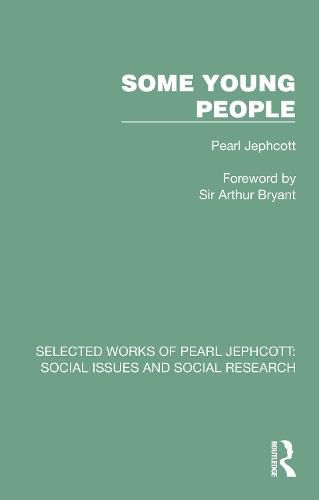Readings Newsletter
Become a Readings Member to make your shopping experience even easier.
Sign in or sign up for free!
You’re not far away from qualifying for FREE standard shipping within Australia
You’ve qualified for FREE standard shipping within Australia
The cart is loading…






"The Richardson boys ganged up with two other big families in their buildings and, at various ages, had tried out most of the local youth organisations. Bert Richardson with a suitable set of brothers and mates, was in the Scouts, but they got ejected. Later, at thirteen, he joined a boys' club for its boxing and football, and belonged on and off till he was sixteen. Then he suddenly dropped out."
Why did Bert drop out? Originally published in 1954, the answer forms the substance of Some Young People, the report of an inquiry into adolescents' reactions to their local youth groups. Besides answering the question "Who joins what?" (and two thirds of these thousand youngsters of 14 to 17 were not members of any youth organisation) the book describes some of the hopes, pleasures and difficulties of such people as Frances, the chocolate packer, who has ambition to marry before long; and John, the carpenter's apprentice, whose passions are autocycling, pigeons and pigs. It also throws light on problems such as those presented by gangs; and suggests the importance of "my friends," the closely-knit set who mean so much to the adolescent.
$9.00 standard shipping within Australia
FREE standard shipping within Australia for orders over $100.00
Express & International shipping calculated at checkout
"The Richardson boys ganged up with two other big families in their buildings and, at various ages, had tried out most of the local youth organisations. Bert Richardson with a suitable set of brothers and mates, was in the Scouts, but they got ejected. Later, at thirteen, he joined a boys' club for its boxing and football, and belonged on and off till he was sixteen. Then he suddenly dropped out."
Why did Bert drop out? Originally published in 1954, the answer forms the substance of Some Young People, the report of an inquiry into adolescents' reactions to their local youth groups. Besides answering the question "Who joins what?" (and two thirds of these thousand youngsters of 14 to 17 were not members of any youth organisation) the book describes some of the hopes, pleasures and difficulties of such people as Frances, the chocolate packer, who has ambition to marry before long; and John, the carpenter's apprentice, whose passions are autocycling, pigeons and pigs. It also throws light on problems such as those presented by gangs; and suggests the importance of "my friends," the closely-knit set who mean so much to the adolescent.